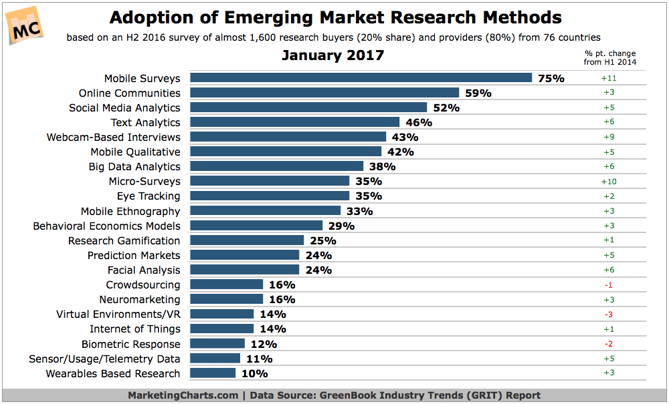Effective online research techniques are changing drastically thanks to the evolution of technology and the power it affords today’s agencies, brand managers, and product developers—as well as the way it enables consumers to easily connect with brands.
In fact, a whole new research approach using agile, iterative insights has been cultivated using online qualitative technology.
Marketing and innovation teams are seeing this new approach as a more effective go-to-market strategy, delivering both faster and better products and marketing campaigns, that ultimately result in stronger topline growth and greater customer loyalty.
Modern market research technology combined with a faster, more iterative approach to research will allow your team to:
1. Drive more iterative, lower-risk decisions.
Newer approaches enable teams to quickly get nuanced feedback on products or marketing programs throughout development. This Iterative Insights approach allows teams to agile, improving their concepts as they go rather than waiting until it is difficult or costly to make changes.
2. Prevent the need for “decision by consensus”.
By delivering quality results with a fraction of the cost and time commitment, newer online qualitative research approaches prevent teams from being forced to choose a winner with no direct consumer feedback.
3. Provide a more comprehensive viewpoint.
The best online qualitative solutions combine a variety techniques for learning such as in-context photo/video sharing, one-on-one or group conversations, detailed concept mark-ups, and even rating or voting on ideas, all in one place.
4. Enable teams to get started today without a big investment.
Older approaches like online communities promise huge returns, but implementing these programs can cost six or even seven figures. The inherent bite-sized approach to newer, more agile online communities is quite different. It means you can get started now for less than the cost of a single set of focus groups.
5. Improve team collaboration.
Consumers can now be part of a group that shares their pain points using products, brainstorms solutions, and rates each other's ideas. Marketers can use the answers they initially receive to influence follow-up questions, adapting their approach based on their audience’s responses, without the time or cost of traveling and sitting in a back room.
6. Provide behavior-based targeting.
Marketers need to talk to the right people if they want to inform the decisions they make. Thanks to the rise of the internet and social media— and all the data that comes with it—it’s easier than ever for marketers to find and recruit qualitative research participants based on behavioral data that indicates what interests they have, what products they have purchased, or brands they have engaged with. These higher quality participants yield better insights.
7. Gather in-context learning.
It is often hard to be there right in the moment when consumers shop for or use your product. When customers are able to give answers and feedback in their own environments on a smart device, marketers get better and more honest answers. Customers share their experiences as they happen and even take photos and videos to capture experiences.
8. Provide multiple customer touchpoints.
Newer approaches offer the ability to conduct research with a group of targeted individuals several times over days or weeks. Instead of relying on long surveys or a single snapshot in time, marketers benefit from the ability to get more in-depth, or share more ideas, without fatiguing consumers or facing high drop-out rates.
9. Facilitate rapid decision making.
Modern research solutions provide the ability to recruit highly targeted audiences overnight—enabling Lean and Agile teams to make informed decisions quickly. With the automation technology, it’s incredibly easy for researchers to find consumers, recruit them, engage with them, and report their findings to the rest of the team in days rather than weeks.
10. Achieve better outcomes.
Now that it’s possible for researchers to get rich data without breaking the bank or wasting a ton of time, organizations can become nimble to the point they can pinpoint their target audience precisely— making changes early in the development lifecycle so as to avoid costly mistakes later on. This agile approach, originally applied to software development, has been shown to improve the quality of the end product.
Instead of spending weeks or months developing products and marketing programs before getting input and feedback on target audience's wants and needs, companies would be wise to identify new research tools that enable them to update concepts frequently during development. In fact, new research technologies have become increasingly adopted over the past few years as evidenced below:

New online qualitative research tools and an Iterative Insights approach have shown promise that marketers can accelerate innovation and get their products to market faster and cheaper.
This is not to say that traditional surveys or in-person qualitative research will become a thing of the past. Rather, a more agile online qualitative approach is becoming the go to method to rapidly recruit and engage with consumers. This allows companies to supplement with traditional methods when these costlier and more time-consuming approach makes sense.
Want to learn even more about new qualitative research? Download our whitepaper, Qualitative Research is Changing!




